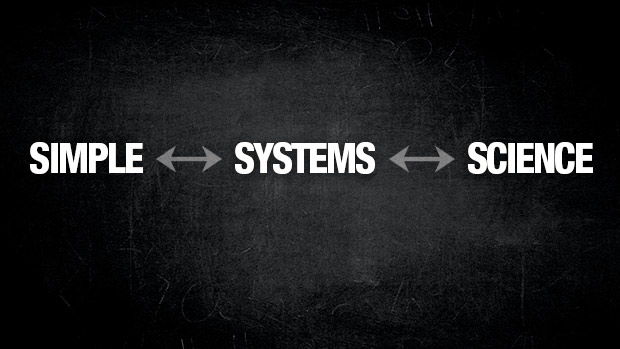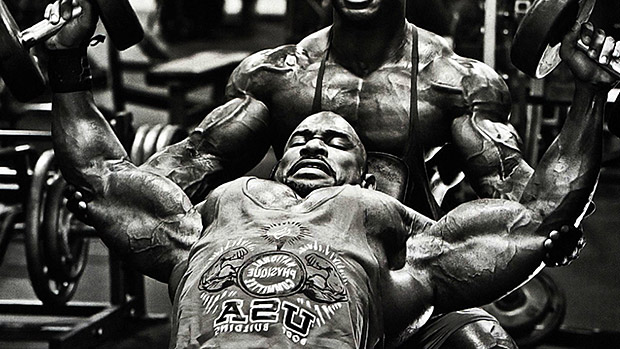There's a lot of talk about science vs. bro-science, research vs. experience, and theory vs. reality. Even the definition of science has become so convoluted it makes you want to mix paint chips into your protein shake.
There's an insidious trend in the world of training and performance, and it's time to bring it to an end.
The Spectrum

We all fall somewhere along this spectrum in terms of how we see training. Let's break it down.
Simple
This is what people might call bro-science. It's what people might call old school. It's lift heavy weight over your head and you'll get strong. It's chasing the pump. Eat more food and you'll gain weight; eat less food and you'll lose weight.
It's classic exercises like squat, press, deadlift, snatch, row. It's hard work and commitment, discipline and sacrifice. It's Arnold and Dorian Yates. If it works, keep doing it. If it doesn't work, stop.
Science
Going to the opposite end of the spectrum, we have science. This is anatomy and physiology and biochemistry and biomechanics. This isn't just lifting heavy weight – this is creating large amounts of mechanical tension to produce an mTOR response that maximizes protein synthesis.
This isn't just chasing the pump – this is doing enough reps to elicit a lactate response that will lead to growth hormone release that supports soft tissue growth and repair. It's knowing the exact physiological responses that an exercise will lead to.
It's understanding biomechanics to prevent injury, maximize power, and/or be as efficient as possible. It's application of knowledge, critical analysis, and optimization.
Now, even though these two ideas are on opposite sides of the spectrum and seem very different from the outside, both of them are very effective. They're just two different perspectives of the same question: What's happening when I do XYZ? They're both based on observations, adjustments, and results.
The problem comes when trying to find the "middle ground" between these two.
Systems
This is where the gurus sit. This is where wacky exercises and questionable diet programs sit. This is where one-size-fits-all exercise classes sit. This is where exercise science curricula sit. This is where the mantra of 8-12 reps for maximum hypertrophy sits.
It's where the trainer who says you have to squat, deadlift, and bench press for maximum gainz sits. It's why even though there have been tremendous gains in science over the last few decades, there are still strongman and athletic records that haven't been touched, or in some cases sniffed, in recent years. This is about trying to fit every person's unique human physiology into a single box or storyline, when we can't even figure out all the answers for just one person.
The truth is that success hinges on the ability to observe, react, and adapt – over and over – until you slowly close in on the results you're looking for. Knowledge will give you clues. You can learn from other people's mistakes. You can understand the human body... which if you're human, is very useful.
Knowledge expedites the process and flavors the work just a little bit differently. In my opinion, knowing the science can create a much more interesting story for the work you're putting into your training journey.
But too often we find ourselves stuck inside this "systems" way of thinking where we have a thousand different people telling us a thousand different exercises and methods and diet plans... and all we want are OUR answers.
This way of looking at problems is right smack in the middle of the spectrum, and is the most dangerous place to be: where it's no longer simple, and it's no longer science.
Where do YOU Sit?
In reality, there's not a single person who sits on either absolute end of the spectrum. Training systems, methods, programs, and exercises all help to organize our thinking and lay a foundation from which to base our training.
Also remember that it's a spectrum. Systems can fall anywhere on this spectrum, rooted either in simplicity or in science.
On the left side of the spectrum, you'll have systems rooted in outcome-based decision making. Take action, see what happens, and then adjust accordingly.
On the right side of the spectrum, you'll have systems based on physical demands and physiological adaptations. What does an exercise do? How will the body respond?
But the further towards the middle you get, the more cautious you should be. Don't complicate simple. Don't simplify science.





